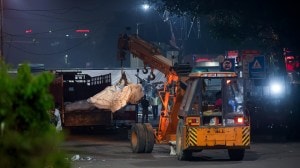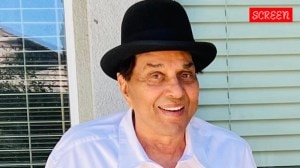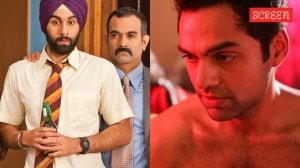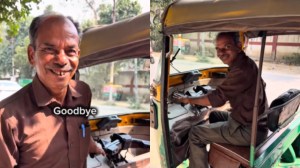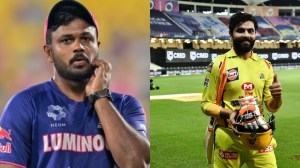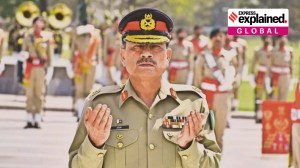Click here to follow Screen Digital on YouTube and stay updated with the latest from the world of cinema.
Era of digital imaging has changed the status of the Director of Photography
Hollywood cinematographer, Matthew J Siegel (with films like The Matrix: Reloaded and Mr & Mrs Smith to his credit) talks about the changing world of film photography
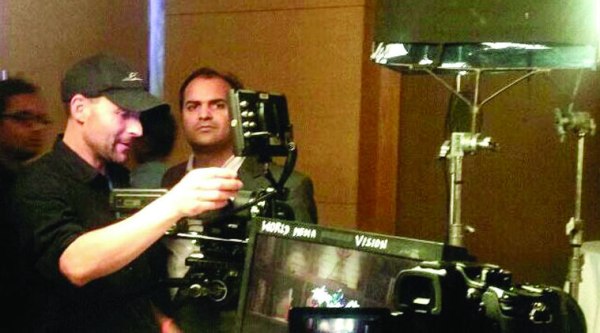 Matthew J. Siegel
Matthew J. Siegel
What is the primary change in film photography/cinematography over the last decade?
There’s a complete shift to high-resolution digital acquisition. The end of film acquisition and film distribution came more swiftly than expected. The era of digital imaging has changed the status of the Director of Photography (DoP) in the production chain. The shift in status can be traced to an influx of new and talented cinematographers in the production pool. The newcomers have access to great tools like inexpensive, palm-sized, mirrorless still cameras that shoot 4K video; and even smaller disposable crash cameras that shoot 4K and can go 100 meters under water; and handheld mobile devices that shoot 4K and 240fps (foot pound second). Amidst this growth in the media and broadcasting industry, many companies are strengthening their broadcast camera line-up using this technology. For example, Panasonic launched photo/video hybrid Digital Single Lens Mirrorless (DSLM) camera — DMC-GH4 — equipped with 4K video recording capability. The digital age has ushered in and facilitated unfettered access to high-end imaging devices by anyone and everyone at a fraction of the cost of traditional camera systems. This shift is referred to as a democratisation of media acquisition, a direct result of the digital revolution.
With technical advancement that has resulted in sophisticated cameras, how can DoPs remain artists and not merely technicians?
The role of the DoP in digital cinema is a balance of both the creative/artistic and the technical. This integration or balance was true in the era of film, when an experienced DoP mastered the technical aspects of the photochemical process in order to achieve a nuanced and stylised final result. In the era of digital cinema, the successful balance of the creative and the technical helps an experienced DoP standout from the mass of content creators. Through on-set experience and/or testing, the best DoPs know all their imaging options from a technical standpoint and how to select the right system for the job from a creative and from a budgetary standpoint.
With LUTs (Look Up Table) and realtime colour grading, the sophisticated digital camera systems in their Raw and Log modes provide a virtually limitless set of imaging options, which can be viewed immediately on set. “What You See is What You Get” places the DoP in the hot seat to quickly make creative and technical decisions during the pressure-filled production day. While a novice DoP can fall victim to the opinions around the monitor, the immediacy of the digital capture and high-end on-set monitoring allows the experienced DoPs to be bold.
A smart, successful DoP studies and trains on the latest equipment so that its technological advancements can serve as an additional creative tool to help fully realise his artistic intent.
Which is the most challenging genre to shoot from a DoPs point of view?
Every genre has its own set of challenges. A big action film involves the co-ordination of multiple units and often carefully choreographed chase scenes. A science fiction or fantasy film uses a large number of VFX sequences, with green screen, motion capture, and compositing. A contemporary Western relies on epic landscapes and remote location work. A strong comic piece has the DoP performing an intricate dance of lens, ND (Neutral Density) filters, and t-stop to insure that the audience sees the story’s environment. This field of view and depth of field coordination allows the physical comedy to play out in focus. Irrespective of the genre, every project has its own set of challenges. The most challenging project for DoP is the one that does not allow him the adequate time in pre-production and the proper resources to do the job during production.
Can you share a few details of the most challenging Hollywood projects that you have worked on?
I have spent many years on the large action films of Hollywood. I stay employed by not spilling secrets. I can say working on a large scale with budgets reaching hundreds of millions of dollars can provide tremendous logistical challenges. Distant locations, large crews, large sets, long schedules and multiple units to coordinate, all of these elements can lead to disaster if not produced properly. However, challenges come in all shapes and sizes. The key is to have solutions in the form of Plan B to make it work.
Is shooting on digital better than shooting on film?
Is digital better? No, not necessarily. Different? Yes. And is this now a moot point? Yes, sadly, film is gone. The case was closed this fall when Deluxe/Technicolor shuttered down the last film lab in New York City. Except for a handful of A-List Hollywood directors working at the highest end, there is no more film acquisition. This fact deeply saddens me both as a DoP and as one who teaches the craft of cinematography around the world. From the days of film, the sense of craft needs to be retained even if the actual celluloid is gone. That is going to be a tough job. And then, there is also the need to retain the value of each take, as it was once measured by the expense of rolling film. When the assistant director called “Roll Camera,” and the AC responded “Rolling,” in the age of film, people paid attention. They knew film was expensive and the loads were limited in duration. We have to work on getting folks to pay attention and respect the take in a time when cameras can record continuously in 4K for hours and the cost is next to nothing.
Can you name a few films — Hollywood, Indian, or any other world cinema — that you think have great photography?
It is always tough to pick a favourite or group of favourite films. To me, it is not about a single film, but being a dedicated student of film and film history from around the world. To be able to learn from classic and contemporary cinema, from documentary, and to have strong references from fine art and photography. Whatever your age and experience level is, go find the American Film Institute’s Top 100 list of all-time great films and make sure that you have seen at least 75 per cent of them. That gets you started. Better if you have seen 90 per cent.
Get a Blue Ray disc of the film, Visions of Light. This documentary on the history of cinema will change the way you see the world. There are perhaps another 30-40 films shown in Visions of Light which will inform you as to what it takes to create great cinematography. The key is to recognise the great cinematography, like all art forms, is purely subjective. But having said that, there have been DoPs of amazing talent who have taken the form to new heights, and created classic images and informed schools of stylistic change. These images have informed and influenced generations of DoPs — the work of Gordon Willis in the Godfather series, the work of Conrad Hall in his early days as well as his later works including Road to Perdition. And now, there is a new generation doing the same, influencing world cinema, as seen in the work of Emmanual Lubiski and Rodrigo Prieto. While I have mentioned Hollywood cinema here, it is important to note that studying world cinema is a key to carving a niche and being able to tell a story effectively. For example, I was deeply influenced early in my career by the work of Wong Kar Wai. I remember watching Chungking Express (1994) and leaving the theater thinking, “We can do that?”
priyanka.sinha@expressindia.com


- 01
- 02
- 03
- 04
- 05














